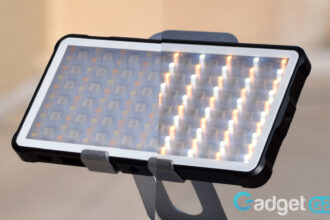While most of the fundamental features of the Asus Zephyrus G14 AniMe Matrix laptop are similar to the base version, this variant has one thing that sets it apart, not only from its counterpart but from every laptop in the market. The 1,215 mini LED display that lets you personalize your laptop to a degree you’ve never been able to before.
To set up the Zephyrus AniMe Matrix, use the Asus Armoury Crate software that is included with all supported laptops. Here, you’ll find various options and modes to personalize the display, alongside a virtual representation of said cover display which will be used as a preview for whatever tweaks or adjustments you do.
So if an in-depth guide to setting up your Asus ROG Zephyrus G14 AniMe Matrix display is what you’re looking for, then this is the guide for you!
Navigating the Asus Armoury Crate Software
Anything and everything regarding setting up your Asus Zephyrus AniMe Matrix are done in the Asus Armoury crate. This software comes pre-installed with all the laptops that have the AniMe Matrix feature. So, don’t worry about having to download it from anywhere. If, for some reason, you end up deleting it, you can download it from Asus Official site.
Simply click the Windows icon at the bottom left, and then either search for ‘ARMOURY CRATE’ in the search box or find it under the ‘A’ section of all your applications.
At starting the Armoury Crate software, you’ll see information regarding your device on display, such as its memory, storage, CPU statistics, and GPU statistics. What you’ll want to do is click on the ‘devices’ tab on the left, which will bring out a pop-up. From there, select the ‘AniMe Matrix’ option.
All the Different Available Modes
At selecting ‘AniMe Matrix’, you’ll see the many modes offered to you at the top right, alongside a virtual representation of the cover display towards the left. There are three main types of setting tabs, or ‘modes’ that you need to know about if you want to set up your AniMe Matrix display.
Animation Mode
This is the mode that most people will have bought this laptop for in the first place. The animation mode allows you to show gifs, pictures, or texts of your choosing on the display of your laptop’s cover.
To begin with, right on top of the virtual representation of the display will be a toolbar that will let you import images, resize said images, and adjust animation loops. Clicking on the ‘Show AniMe Matrix overlay’ option will toggle the display render on or off.
At the bottom of the dummy virtual display will be options to either rearrange graphics or adjust the length of said graphics. You will also be able to either save or delete the entire timeline from here. Finally, on the right side of the screen, below the ‘mode’ options, you’ll see three different tabs to choose from.
Animation Settings
The first tab will allow you to adjust the contrast and brightness of the animation and delay when an image starts. If fine-tune adjustment options are what you’re looking for, then this tab will help you do just that.
Content Library
By opening this tab, you’ll be able to find all preloaded ROG animations, as well as any images you have imported. Previously saved timelines will also be found here. Simply drag and drop animations from this tab to the virtual display at the left to add them to a timeline.
Text Effects
The final tab will let you add as well as adjust the text. Be that changing the font, font size, or perhaps adjusting the speed at which text is rotated. There will also be a text box where you can write whatever text you want to be displayed on the cover of your laptop.
System Mode
By selecting the second option, you’ll be given the ability to make the display alert you about various notifications. These alerts include
- Incoming mail
- The time
- Battery level
- Current date
Additionally, you’ll also be able to adjust the message transition time based on what suits your best.
Audio Mode
By selecting the third mode, you’ll be able to navigate between two tabs. The first one, audio mode, will allow you to choose between multiple audio visualizers. These visualizers will show on your AniMe Matrix cover display and go with any audio that might be playing.
The second tab offered in this mode is, similar to in animation mode, called text effects. Here you’ll be able to combine your selected audio visualizer with any text you want. As is to be expected, all the personalization options offered in animation mode will also be offered here.
Preference Settings
Finally, clicking on the fourth available option next to the audio mode one will open the preference settings tab. Here you’ll be able to turn the AniMe display on or off, as well as determine whether or not you want to turn on multiple features that might affect your device’s power consumption.
These features range from displaying power-saving animation to turning the display off when the adapter is unplugged.
Conclusion
One might assume that setting up such a unique feature would be difficult to understand. However, the Asus Armory Crate makes it so even someone not so used to tech can find their way around the many offered options using a guide just like this one. We hope you have fun experimenting with this incredible display.





